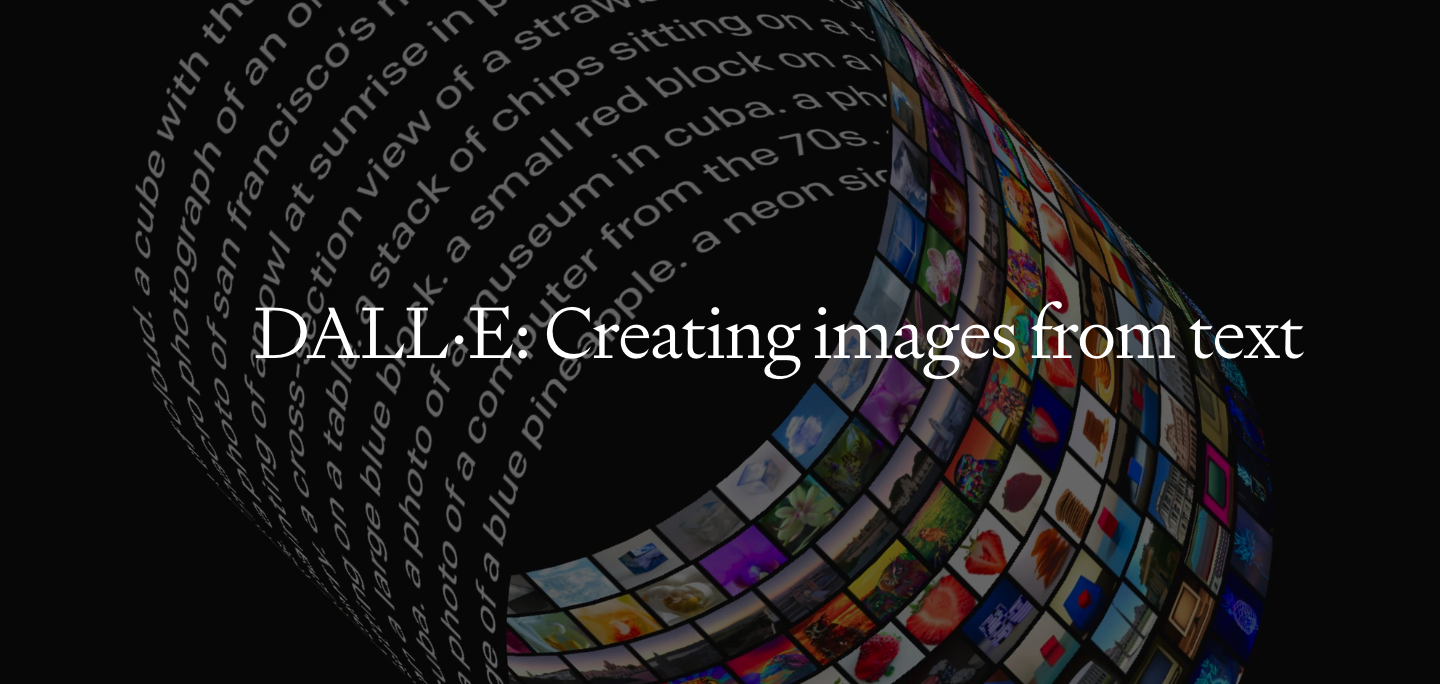 DALL-E is a 12-billion parameter version of GPT-3 trained to generate images from text descriptions, using a dataset of text–image pairs. OpenAI, DALL-E’s developer, has found that it has a diverse set of capabilities, including creating anthropomorphized versions of animals and objects, combining unrelated concepts in plausible ways, rendering text, and applying transformations to existing images. In recent years, the field of artificial intelligence has made significant strides in both linguistic and artistic generators through artificial intelligence. One such groundbreaking development is DALL-E, an AI model developed by OpenAI that can generate highly imaginative and unique images based on textual descriptions. While DALL-E has been widely celebrated for its creative applications, its potential in the education space is only beginning to be explored. Here, we will explore five considerations of how DALL-E can revolutionize education by fostering creativity, enhancing visual learning, and enabling personalized educational experiences.
DALL-E is a 12-billion parameter version of GPT-3 trained to generate images from text descriptions, using a dataset of text–image pairs. OpenAI, DALL-E’s developer, has found that it has a diverse set of capabilities, including creating anthropomorphized versions of animals and objects, combining unrelated concepts in plausible ways, rendering text, and applying transformations to existing images. In recent years, the field of artificial intelligence has made significant strides in both linguistic and artistic generators through artificial intelligence. One such groundbreaking development is DALL-E, an AI model developed by OpenAI that can generate highly imaginative and unique images based on textual descriptions. While DALL-E has been widely celebrated for its creative applications, its potential in the education space is only beginning to be explored. Here, we will explore five considerations of how DALL-E can revolutionize education by fostering creativity, enhancing visual learning, and enabling personalized educational experiences.
Enhancing Visual Learning:
Visual learning plays a crucial role in education, as it helps students grasp complex concepts and engage with the material more effectively. DALL-E’s ability to generate images based on textual prompts opens up new avenues for visual learning. Imagine a history class where students can provide textual descriptions of historical events, and DALL-E generates corresponding visual representations. This enables students to visualize and better understand complex historical narratives, making the learning process more immersive and engaging.
Promoting Creativity:
Creativity is a fundamental skill that can be nurtured through education. DALL-E’s capacity to generate unique and imaginative images can encourage students to think outside the box and express their ideas visually. By prompting students to describe a concept or story in text and then using DALL-E to transform those descriptions into images, educators can inspire creative thinking and help students explore alternative perspectives. This approach empowers students to communicate and interpret information through a visual lens, fostering their imagination and critical thinking abilities.
Personalized Educational Experiences:
Every student has unique learning preferences and strengths. DALL-E can be leveraged to create personalized educational experiences tailored to individual students’ needs. By allowing students to describe a topic in their own words and generate corresponding images, DALL-E can provide personalized visual content that aligns with their learning styles. For example, a student who learns best through visual cues can receive image-based explanations or visual summaries, while another student who prefers written text can still benefit from the generated images as supplementary materials. This adaptability can cater to diverse learning styles, promoting inclusivity and student engagement.
Cross-Disciplinary Applications:
DALL-E’s potential is not limited to specific subjects; it can be applied across various disciplines. In mathematics, students can describe geometric shapes or visualize mathematical concepts, aiding in comprehension and problem-solving. In literature, students can generate visual representations of characters or scenes from stories, fostering deeper analysis and interpretation. In science classes, DALL-E can help students visualize complex scientific phenomena or create diagrams for experiments, enhancing their understanding of abstract concepts. In business courses like marketing, it can assist students in the creation of visual content for inbound marketing campaigns, generating featured images and models of data flow.
Ethical Considerations:
As with any technological advancement, the use of DALL-E in education raises ethical considerations. It is important to address issues such as data privacy, bias, and ensuring that AI-generated content aligns with educational objectives. Educators and institutions must navigate these considerations and use DALL-E as a tool to enhance learning rather than replace critical thinking or human interaction. While many professors have anxiety about the use of artificial intelligence in the classroom, DALL-E could be an excellent way to help students be creative without having the technical skills of a graphic artist to create interesting digital images.
Conclusion:
DALL-E’s ability to generate visual content based on textual descriptions opens up exciting possibilities in the education space. By promoting creativity, enhancing visual learning, and enabling personalized educational experiences, DALL-E can revolutionize the way students engage with and understand various subjects. However, its implementation should be approached mindfully, with careful consideration of ethical implications and the importance of human guidance and interaction. As we continue to explore the potential of AI in education, DALL-E stands as a testament to the transformative power of technology in fostering creativity and enriching the learning experience for students of all backgrounds.
This summer, we are adding a content module to our courseware about the use of artificial intelligence in the classroom. We will cover the use of artificial intelligence to promote creativity, time-management, and visual learning. We will specifically discuss ChatGPT, Midjourney AI, and DALL-E both to explain functionality and how to use them in their 8-week live practicum. If you would like to learn more about how to use Digital Engine to promote creativity in your classroom, fill out a contact us form and let us know. You can also demo our inbound marketing curriculum to see all of the course modules that we teach in our digital marketing curriculum.




0 Comments